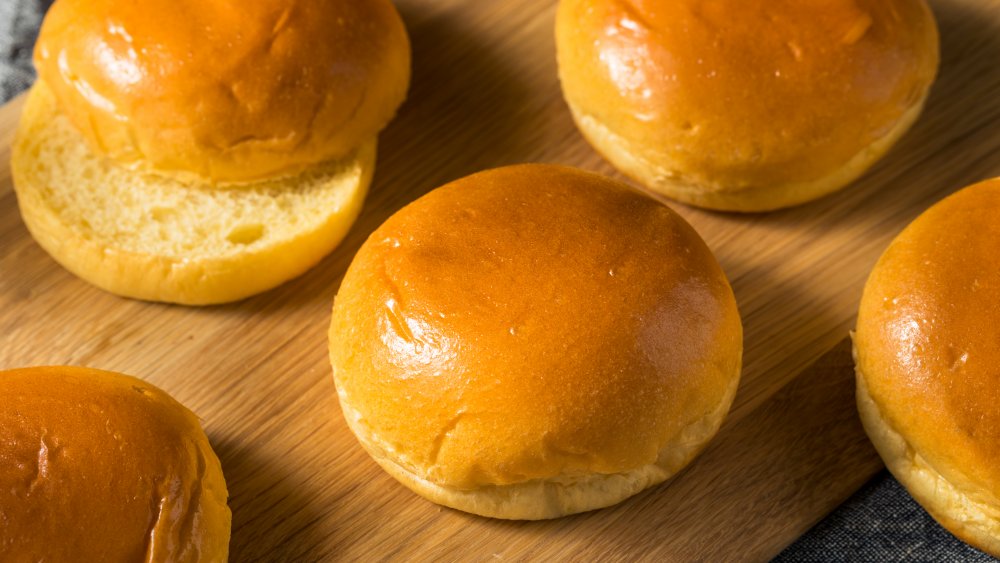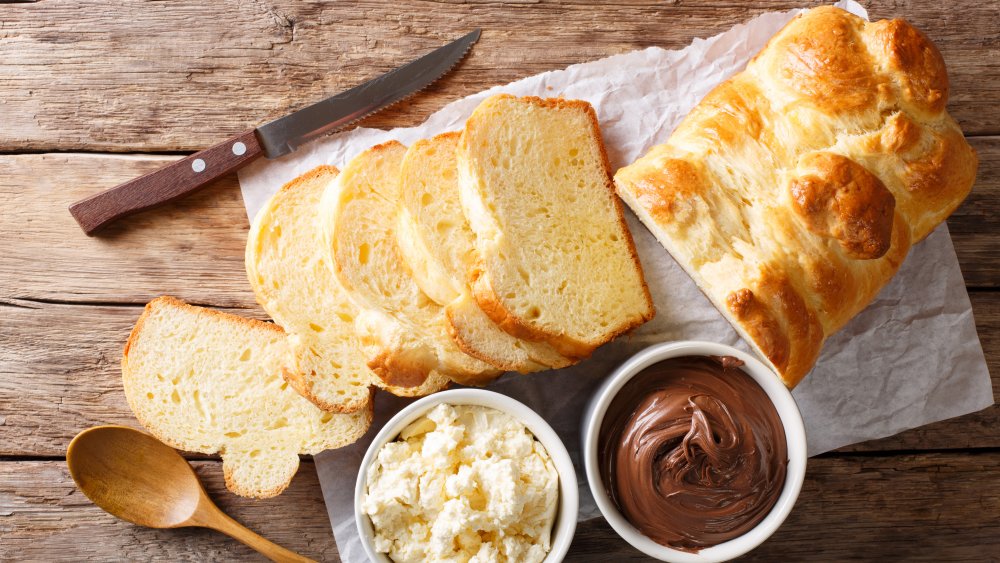The Real Reason Brioche Is So Expensive
The French aren't known for doing things in halves, particularly when it comes to food or fashion, which should then come as no surprise that brioche isn't just made with the ingredients we would find in a normal loaf of bread: flour, yeast, salt, and water; brioche dough also has butter, eggs, milk, and sugar (via Serious Eats).
A brioche is considered to be Viennoiserie, or a type of breakfast pastry inspired by the style similar to pastries found in Vienna, Austria and which sits in the gap between French pastry and French bread. Think of a brioche as a cross between a pastry and a bread since it uses white flour and yeast cultures, but has a high butter and egg content (via Cordon Bleu). Brioche even warrants a mention in French political lore — Marie Antoinette was said to have responded to the story that her subjects were starving by saying "qu'ils mangent de la brioche" or literally, "Let them eat brioche," although there is no evidence the queen actually uttered those words (via Britannica).
Brioche dough is soft and sticky because it has eggs and butter
Brioche is so rich it is closer to croissants, danishes, and beignets on the bread family tree than it is to the kind of bread you might usually pair with ham for a standard lunchbox sandwich. Its extravagant ingredients, which aren't normally used to make breads, explains its higher price point. Closer to home (and as it is in Europe), brioche is known as a breakfast dough because its texture makes it a natural to make sticky buns, doughnuts, and chocolate or fruit buns with.
Making brioche at home may be doable if you have all of the ingredients, but making it may not be as simple as it sounds. Because it has eggs and butter, its dough is soft, sticky, and slippery as a result. While traditional bakers are happy to slam their buttery dough against a marble countertop, you may opt to use a stand mixer since because the mixture is so rich in fat that gluten, it is not easily formed — and it will demand extra knead time as a result.
Brioche dough is also best left in the refrigerator after it is kneaded, as shaping cooled, hardened dough may be easier to handle than a soft, slippery one. Brioche can be used to make sandwiches, or left to go stale so it can be revived as French toast (via The Kitchn).

